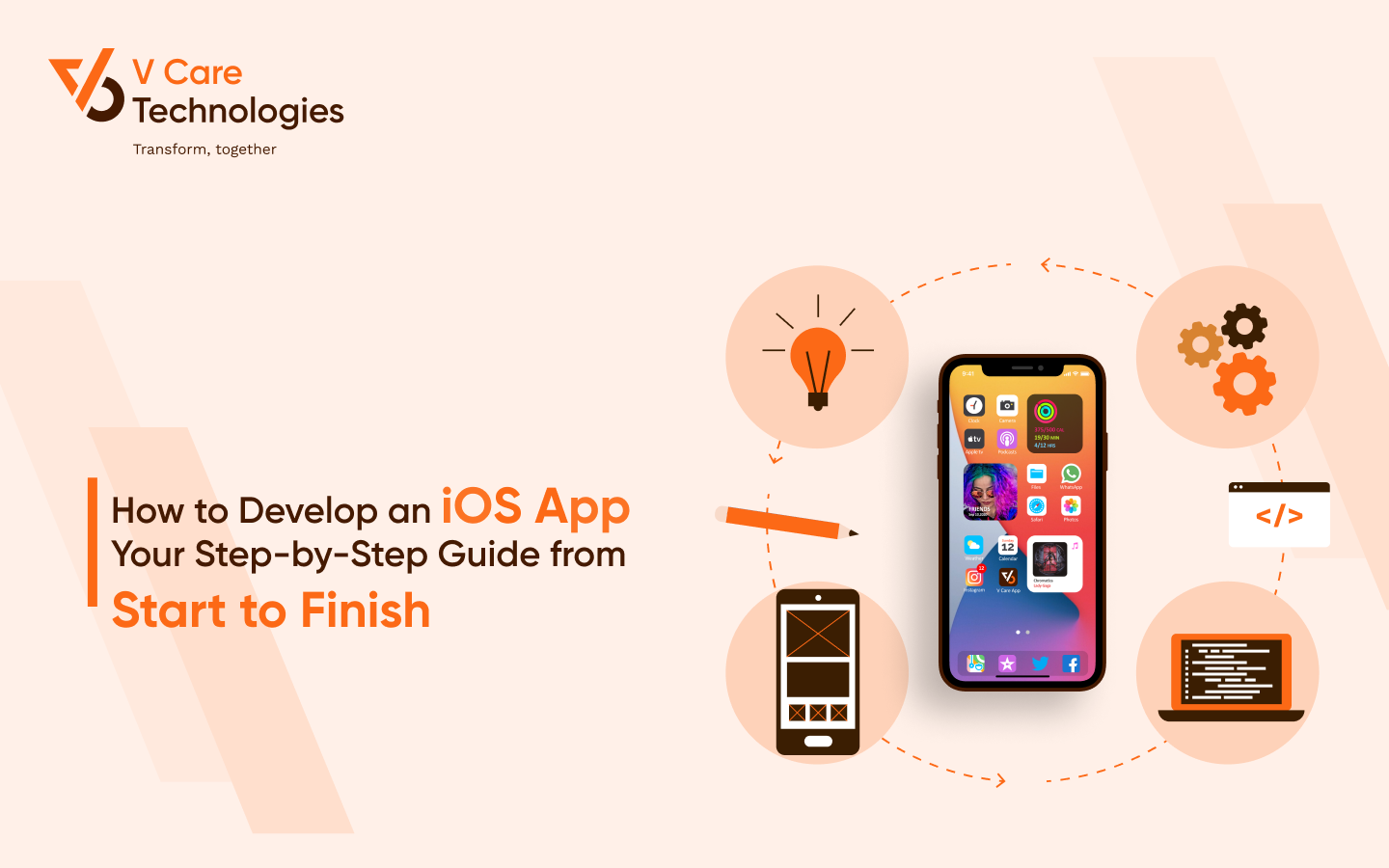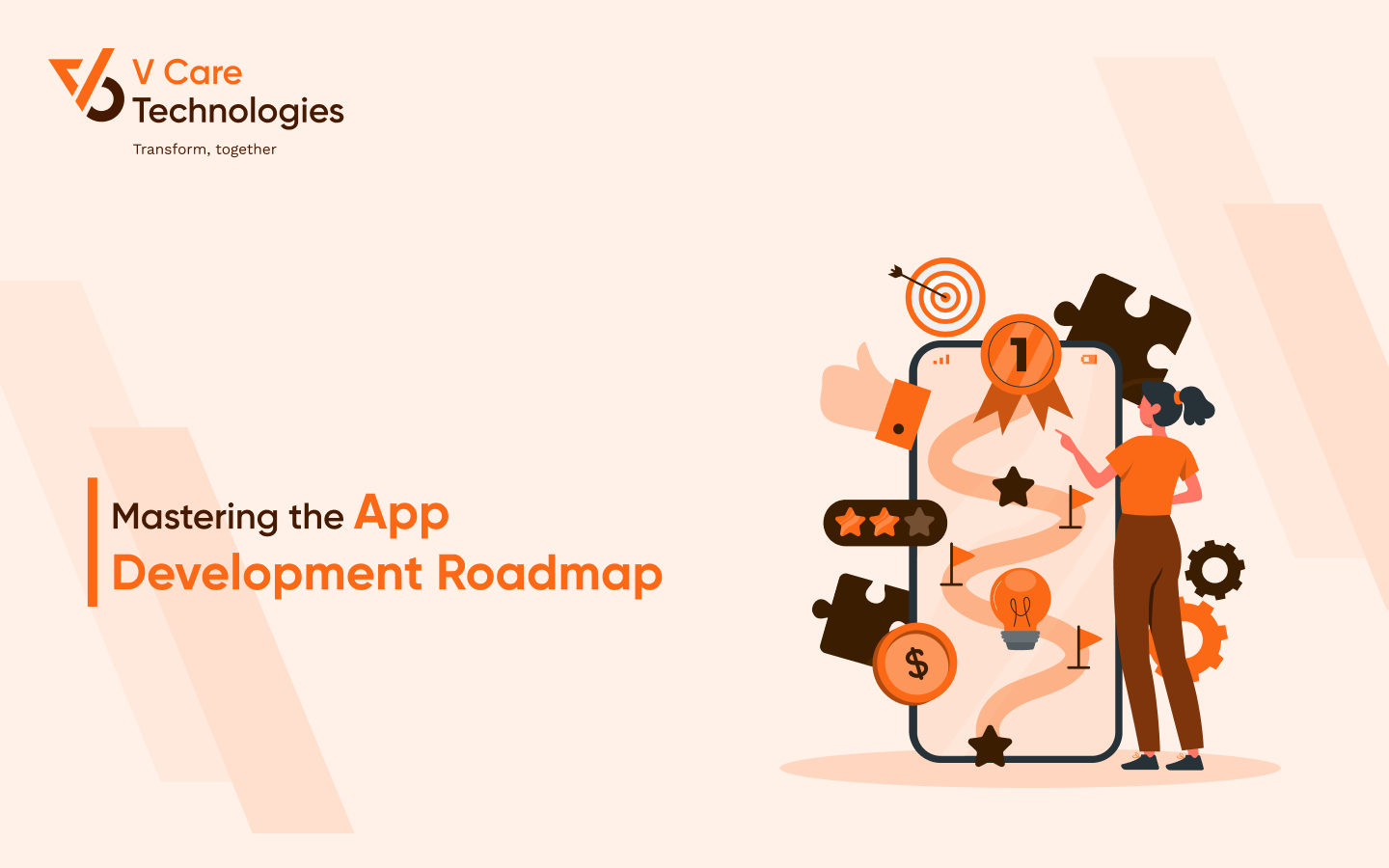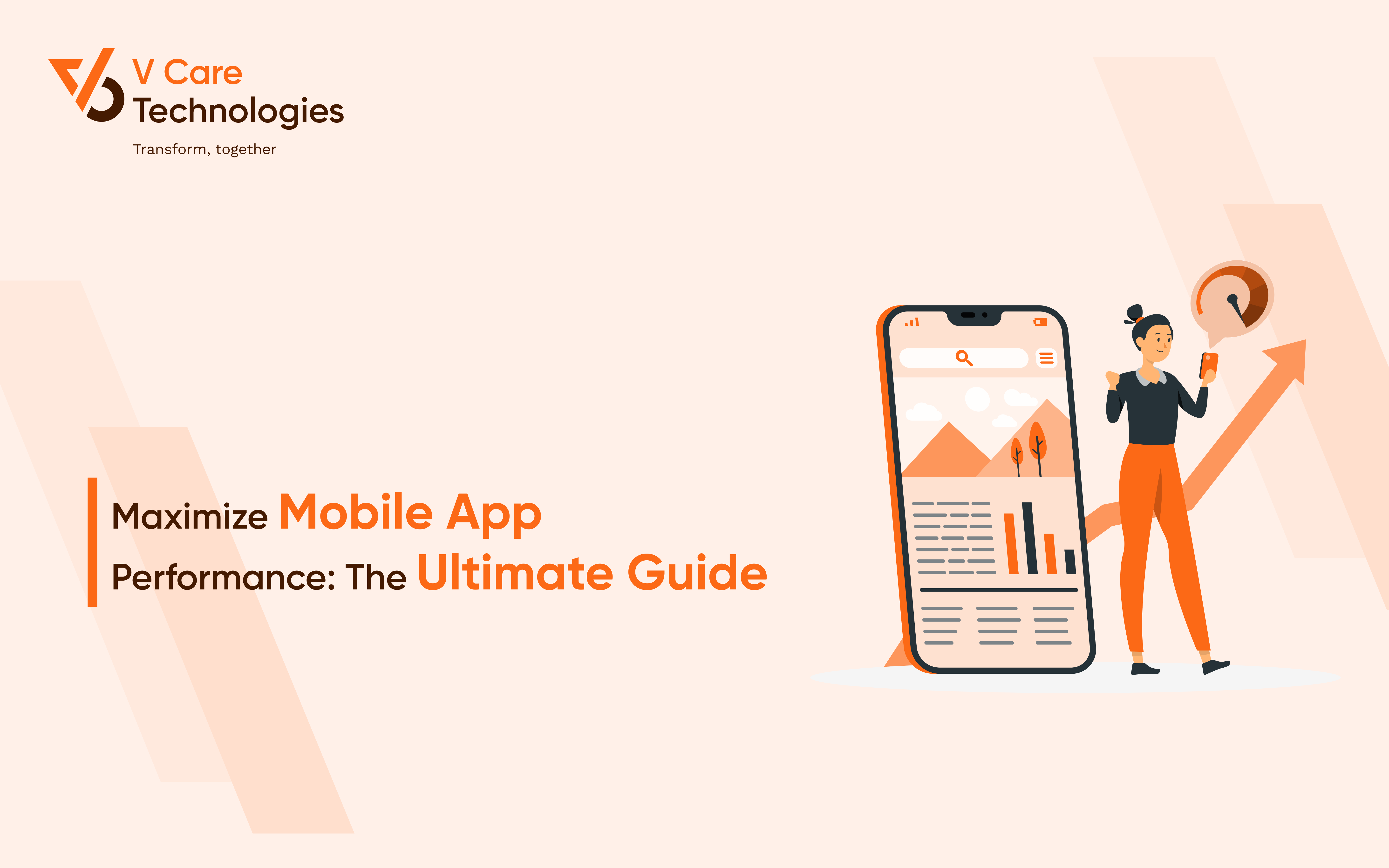How to Develop an iOS App: Your Step-by-Step Guide from Start to Finish
Introduction:
In the digital age, iOS app development has become a gateway to innovation, creativity, and endless possibilities. Whether you have a game-changing app idea or you simply want to dip your toes into the world of app development, this step-by-step guide on "How to Develop an iOS App" will serve as your compass. We understand that the journey can seem daunting, so we've designed this guide to make it accessible to everyone. No prior coding experience is required – just your enthusiasm and a desire to learn.
How to Develop an iOS App: Understanding the Basics:
iOS - A World of Opportunities
Before we dive into the technicalities, let's understand why iOS app development is worth your time and effort. iOS, the operating system that powers Apple's iconic devices, is known for its user-friendly interface and exceptional user experience. It's a platform with millions of active users worldwide, presenting a massive market for your app.
Meet Your Tools: Xcode and Swift
To get started, you'll need two essential tools: Xcode and Swift. Xcode is Apple's official Integrated Development Environment (IDE), providing you with everything you need to create iOS apps. Swift, on the other hand, is the programming language you'll use to bring your app to life. It's known for its simplicity, speed, and safety – making it an ideal choice for both beginners and seasoned developers.
Key Components of an iOS App
Every iOS app comprises essential components that determine how it functions. These include the user interface (UI), app logic, and data storage. Understanding these components will help you navigate the development process more effectively.
How to Develop an iOS App: Planning Your App:
Defining Your App's Purpose
The first step in your app development journey is defining the purpose of your app. What problem does it solve? Who is your target audience? What unique value will your app offer? Taking the time to define your app's purpose sets the direction for the entire development process.
Brainstorming and Refining Your App Idea
With your purpose in mind, it's time to brainstorm ideas. Gather your thoughts, jot down concepts, and let your creativity flow. Consider the features your app will offer, the user experience you want to create, and how it will stand out in a crowded market. As you brainstorm, you'll naturally refine your ideas and get closer to a solid app concept.
Creating a Project Plan and Timeline
Once you have a clear idea of your app, it's crucial to create a project plan and timeline. Outline the development stages, set achievable milestones, and allocate time for each task. Having a well-structured plan will help you stay organized and on track throughout the development process.
How to Develop an iOS App: Setting Up Your Development Environment:
Downloading and Installing Xcode
Now that you've laid the groundwork, it's time to set up your development environment. Start by downloading Xcode, which is available for free on the Mac App Store. Xcode includes everything you need for iOS app development, from code writing to testing and deployment.
Setting Up an Apple Developer Account
To distribute your app on the App Store, you'll need an Apple Developer account. It's easy to set up and allows you to access valuable resources, documentation, and tools. Don't worry; you won't need to pay any fees until you're ready to submit your app.
Creating a Sample Project in Xcode
Before you dive into developing your app, it's helpful to get acquainted with Xcode. Create a sample project to explore the interface, understand how files are organized, and practice writing Swift code. Familiarizing yourself with Xcode will make the development process smoother.
How to Develop an iOS App: Learning Swift Programming:
Basics of Swift's Syntax and Concepts
With your development environment set up, it's time to start learning Swift programming. Swift is designed to be user-friendly, and its syntax is concise and expressive. You'll begin with the basics, such as variables, data types, and control structures. Learning Swift is like learning a new language – and it can be equally enjoyable.
Recommended Learning Resources
To accelerate your Swift learning journey, we recommend exploring a variety of resources. Online courses, tutorials, and books can provide structured lessons and hands-on exercises. Popular online platforms like Udemy, Coursera, and Codecademy offer Swift courses suitable for all skill levels.
Coding Exercises or Examples
Learning by doing is a powerful approach. Practice coding by working on small exercises and examples. Write code to solve problems or create simple applications. These practical exercises will reinforce your understanding of Swift and build your confidence as a developer.
How to Develop an iOS App: Designing Your App's User Interface (UI):
The Importance of User-Friendly Design
User experience is at the heart of every successful app. A user-friendly design ensures that your app is intuitive and enjoyable to use. Think about how users will interact with your app and aim to create a design that guides them seamlessly through its features.
Using Interface Builder and Storyboards
Xcode provides tools like Interface Builder and Storyboards to help you design your app's user interface visually. These tools allow you to create screens, add elements, and define the flow of your app without writing extensive code. It's a user-friendly approach that simplifies the UI design process.
Tips for Creating an Appealing UI
As you design your app's user interface, consider factors like colour schemes, typography, and layout. Keep the design clean and uncluttered, ensuring that buttons and navigation are easily accessible. Test your UI with potential users to gather feedback and make improvements.
How to Develop an iOS App: Writing Code and Implementing Features:
Writing Code in Swift
With your app's design in place, it's time to start writing code. Swift's syntax is designed to be human-readable and concise, making it accessible to developers of all levels. Begin by writing the code that powers the app's functionality, such as handling user input and managing data.
Adding Functionality to the App
The core of any app is its functionality. Depending on your app's purpose, you'll add features like data storage, user authentication, and interactive elements. Break down these features into smaller tasks and implement them step by step.
Examples of Common Features
To illustrate the development process, let's explore some common app features:
1. User Registration and Login: If your app requires user accounts, you'll create screens for registration and login. Implement user authentication to securely manage user data.
2. In-App Messaging: For a social or messaging app, you'll build a messaging system that allows users to send and receive messages in real time.
3. Location-Based Services: Apps that use location data, such as maps or delivery services, will integrate location-based features using built-in iOS frameworks.
4. Payment Processing: E-commerce apps will incorporate payment processing using secure and trusted payment gateways.
5. Push Notifications: Keep users engaged with your app by implementing push notifications to provide updates and alerts.
Testing Your App:
The Significance of Thorough Testing
Testing is a crucial phase in app development, ensuring that your app works as intended and provides a smooth user experience. It's essential to identify and fix issues before your app reaches users' hands.
Using the iOS Simulator
One of the advantages of iOS app development is the availability of the iOS Simulator. This tool
allows you to test your app on virtual iOS devices with various screen sizes and versions of iOS. It's a convenient way to spot-check your app's functionality.
Real Device Testing
While the iOS Simulator is useful, it's equally important to test your app on real devices. This step ensures that your app performs correctly in real-world scenarios. Connect your iOS device to Xcode and run your app directly on your iPhone or iPad.
How to Develop an iOS App: Debugging and Troubleshooting:
Identifying and Fixing Common Bugs
Bugs are an inevitable part of software development, and identifying and fixing them is a critical skill. When you encounter issues, approach them systematically. Use debugging tools in Xcode to inspect variables and step through your code to pinpoint the problem's source.
Using Xcode's Debugging Tools
Xcode provides a suite of debugging tools to assist you in diagnosing and resolving issues. Features like breakpoints, the debugger console, and the visual debugger help you gain insights into your code's execution.
Resources for Complex Issues
Don't hesitate to seek additional resources for more complex issues or challenges beyond basic debugging. Online forums, developer communities, and Apple's official documentation can provide valuable insights and solutions.
Preparing for App Store Submission:
App Store Requirements and Guidelines
Before your app can be published on the App Store, it must meet Apple's requirements and guidelines. These guidelines cover various aspects, including app functionality, design, and user experience. Familiarize yourself with these guidelines to ensure your app complies.
Preparing App Assets, Screenshots, and Descriptions
In addition to the app itself, you'll need to prepare various assets for your App Store listing. This includes creating compelling app icons, screenshots that showcase your app's features, and well-crafted app descriptions that entice users to download and install your app.
Submission Process in App Store Connect
Apple provides a platform called App Store Connect, where you can manage your app's listing, updates, and distribution. We'll guide you through the submission process, which includes filling out app details, setting pricing and availability, and undergoing a review process to ensure your app meets Apple's standards.
How to Develop an iOS App: Launching Your iOS App:
Generating Buzz Before the Launch
A successful app launch involves more than just uploading your app to the App Store. It's about creating anticipation and excitement among potential users. Consider pre-launch marketing strategies, such as teaser campaigns, social media announcements, and email newsletters, to build interest in your app.
Marketing and Promotion Strategies
Effective marketing is key to reaching your target audience. Consider various marketing channels, such as social media advertising, app store optimization (ASO), and partnerships with influencers or relevant websites. Tailor your strategy to your app's unique selling points and target demographics.
Monitoring Initial User Feedback
Once your app is live, it's essential to monitor user feedback closely. Pay attention to user reviews, ratings, and comments on the App Store and social media. Use this feedback to identify areas for improvement and to gauge user satisfaction.
Conclusion:
In this comprehensive guide on "How to Develop an iOS App," we've taken you on a journey from the inception of your app idea to its successful launch on the App Store. We've covered the significance of iOS app development, introduced you to essential tools like Xcode and Swift, and walked you through the various stages of app creation.
Now, it's your turn to turn your ideas into reality. We encourage you to start your iOS app development journey with confidence. Remember that every app starts with a single line of code and a vision. The possibilities are endless, and your creativity knows no bounds.
Final Thoughts:
We want to express our gratitude for joining us on this adventure in iOS app development. It's a rewarding journey that offers the opportunity to create something meaningful and impactful. If you have any questions or comments, or if there's anything else you'd like to learn about app development, please don't hesitate to ask. We're here to support you in your app development endeavours. Good luck, and happy coding!
Looking for the Best Mobile App Development Company in Surat? Interested in Bringing Your iOS App Idea to Life?
At V Care Technologies, we're passionate about turning innovative concepts into successful iOS applications. Our experienced team can guide you through every step of the app development process, from planning to launch. Let's collaborate and make your app vision a reality. Contact us today and embark on your app development journey with confidence!
FAQ
1. Can I develop my own iOS app?
- Yes, you can develop your own iOS app! With the right resources, dedication, and a willingness to learn, anyone can develop an iOS app. There are numerous online tutorials, courses, and communities available to help you get started, even if you have no prior coding experience.
2. How do I develop an app for iOS applications?
- To develop an iOS app, follow these general steps:
- Learn the basics: Understand iOS fundamentals, Swift programming language, and essential tools like Xcode.
- Define your app idea: Clearly define the purpose, features, and target audience for your app.
- Set up the development environment: Download Xcode, set up an Apple Developer account, and learn to use the development tools.
- Learn Swift programming: Acquire proficiency in Swift, the primary language used for iOS app development.
- Design the app: Create the app's user interface and plan its functionality.
- Write code and implement features: Write the code for your app's functionality based on your design.
- Test your app: Thoroughly test your app on simulators and real devices to identify and fix any bugs.
- Prepare for App Store submission: Ensure your app complies with App Store guidelines, prepare necessary assets, and submit it for review.
- Launch your app: Once approved, promote and launch your app on the App Store.
3. How much does it cost to develop an app for iOS?
- The cost of developing an iOS app varies based on factors like complexity, features, design, development time, and the development team's rates. Simple apps may cost a few thousand dollars, while complex or highly interactive apps can range from tens of thousands to hundreds of thousands of dollars. It's essential to define your app's scope and consult with app developers to get accurate cost estimates.
4. What language is used for iOS app development?
- The primary language used for iOS app development is Swift. Swift is a modern, powerful, and intuitive programming language developed by Apple specifically for iOS, macOS, watchOS, and tvOS app development. Objective-C is another language used for iOS development, but Swift has become the preferred choice for its safety, performance, and ease of use.
Author: Murtuza Tarwala
2023-07-17




 About us
About us Services
Services Projects
Projects Our Blogs
Our Blogs





